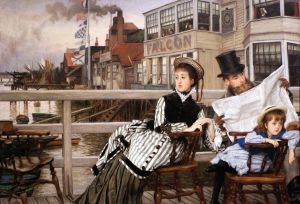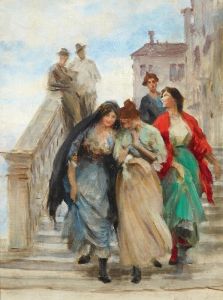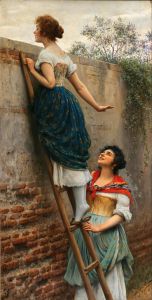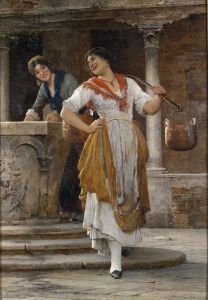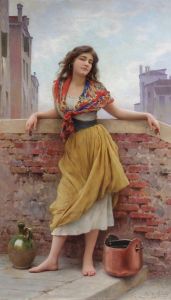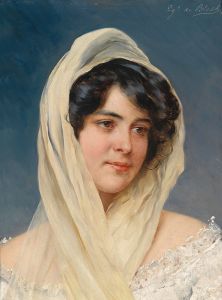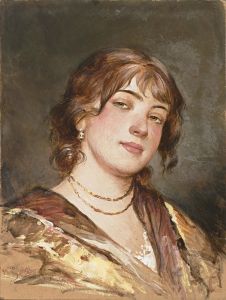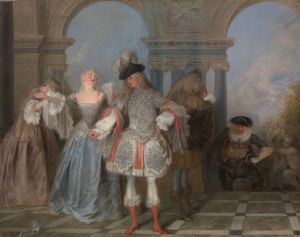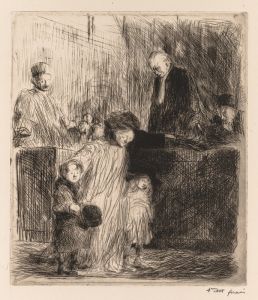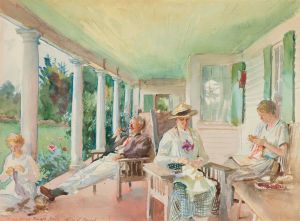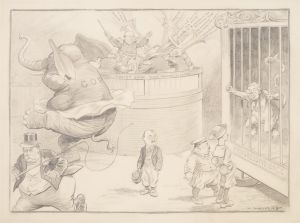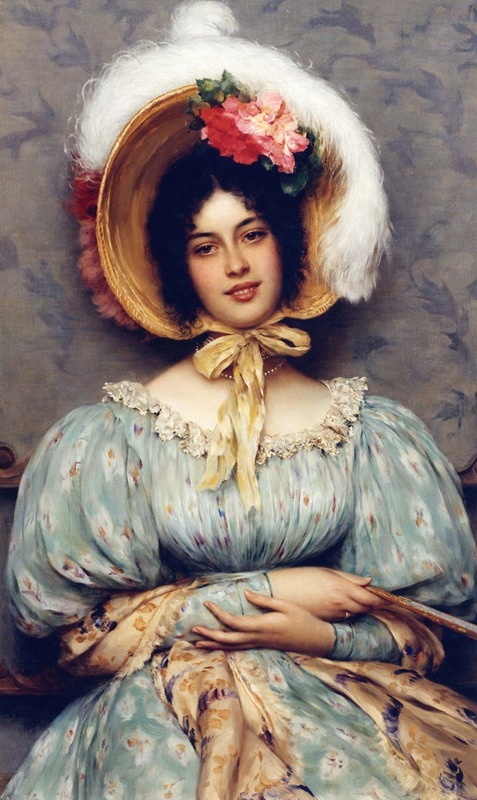
At the Opera
A hand-painted replica of Eugen von Blaas’s masterpiece At the Opera, meticulously crafted by professional artists to capture the true essence of the original. Each piece is created with museum-quality canvas and rare mineral pigments, carefully painted by experienced artists with delicate brushstrokes and rich, layered colors to perfectly recreate the texture of the original artwork. Unlike machine-printed reproductions, this hand-painted version brings the painting to life, infused with the artist’s emotions and skill in every stroke. Whether for personal collection or home decoration, it instantly elevates the artistic atmosphere of any space.
Eugen von Blaas, an Italian painter of Austrian descent, is renowned for his captivating genre paintings, often depicting scenes of everyday life with a focus on the Venetian society of the 19th century. One of his notable works is "At the Opera," which exemplifies his skill in capturing the elegance and social nuances of his time.
"At the Opera" is a fine example of von Blaas's ability to portray the intricate details of human interaction and the opulent settings of the period. The painting depicts a scene from an opera house, a popular social venue during the 19th century, where the elite gathered not only to enjoy performances but also to socialize and display their status and fashion.
In this painting, von Blaas captures the essence of the opera experience, focusing on the audience rather than the performance itself. The composition typically includes elegantly dressed figures, showcasing the fashion of the era with meticulous attention to detail. The artist's use of color and light highlights the luxurious fabrics and the refined atmosphere of the opera house. The expressions and postures of the figures are carefully rendered, conveying a sense of anticipation, engagement, or perhaps intrigue, as they interact with one another.
Von Blaas's technique is characterized by a smooth, polished finish, which enhances the realism of the scene. His adept use of light and shadow adds depth and dimension to the painting, drawing the viewer's eye to the central figures while also providing a glimpse into the surrounding environment. The background often includes architectural elements of the opera house, such as ornate balconies or plush seating, further emphasizing the grandeur of the setting.
"At the Opera" reflects von Blaas's interest in the social dynamics of his time, capturing a moment that is both specific and universal. The painting serves as a window into the past, offering insights into the cultural and social practices of the 19th-century European elite. It also highlights the role of the opera as a significant cultural institution, where art, music, and society intersected.
Eugen von Blaas's work, including "At the Opera," is celebrated for its technical proficiency and its ability to convey the subtleties of human interaction. His paintings remain popular among collectors and art enthusiasts, appreciated for their beauty, historical context, and the artist's keen observation of the world around him. Through works like "At the Opera," von Blaas has left a lasting legacy, providing a visual record of a bygone era and the vibrant social life that characterized it.





